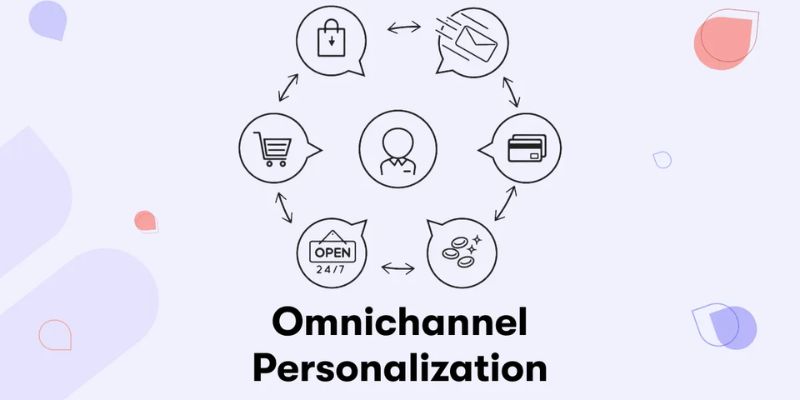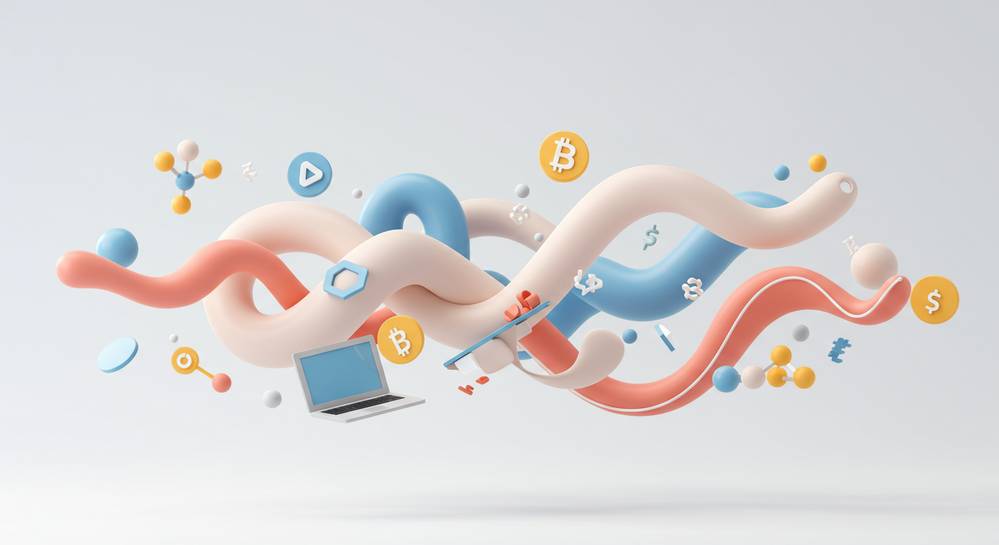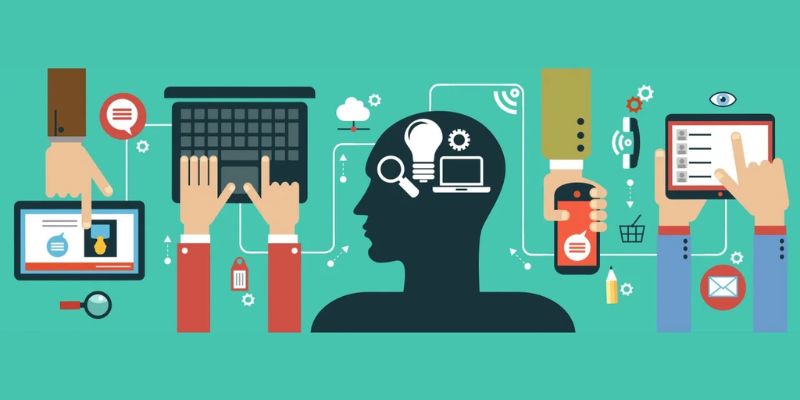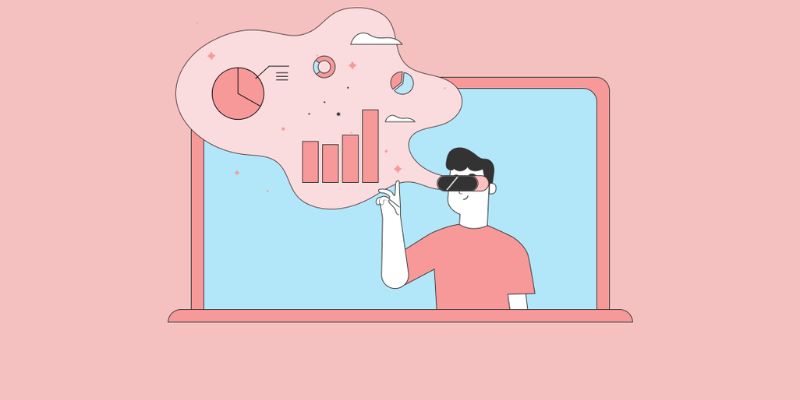As a champion of modern marketing strategies, I’ve watched the rise of omnichannel marketing and personalized experiences reshape the landscape. No more one-size-fits-all; today, it’s about molding the perfect customer journey. Gone are the days of siloed channels; now, we intertwine them for a seamless tale, punctuated with tailored interactions at every turn. Stick around as I unpack how turning multichannel noise into a symphonic omnichannel strategy can win hearts, and keep them coming back for more.
Understanding Omnichannel vs Multichannel Strategies
Defining a Seamless Customer Experience
What makes a customer experience seamless? It’s when you enjoy smooth shopping, no bumps or stops from screen to store. It’s like one big, happy chat with your favorite brand. They know you, no matter where you shop. It’s a cool feeling, right? That’s what seamless is all about.
Seamless means every time you shop, it feels like the store gets you. They remember what you like, making it easy to find stuff you love. Whether you’re clicking through their website or walking into the shop, they’re ready for you. It feels like magic, but it’s smart tech doing the work, leading you to that perfect buy.
Imagine going from liking a top on Instagram to buying it on their app. Then, picking it up in-store, the staff says, “It’s right here, and those jeans you like are on sale!” That’s seamless – each step is linked, like friends holding hands, guiding you through.
Transitioning from Multichannel to Omnichannel
Now, what’s the real chat about moving from multichannel to omnichannel? Multichannel is like having many keys for different doors – one for the store, one for the app, another for the website. It works, but it’s a lot to juggle. Omnichannel, though, is like one magic key that opens all doors and even talks to you. It remembers every door you’ve walked through and likes to surprise you with gifts.
Switching to omnichannel means breaking down walls. It’s about getting all the pieces – the app, the site, the store – to talk to each other. It’s like turning solo singers into a rockin’ band. And this band plays the tune of what you want, all in sync, making sure your shopping jam keeps you grooving.
Businesses are hopping on this bandwagon big time. They’re seeing how one happy dance with customers can lead to another. Once they’re in this groove, they don’t want to dance solo again. They use data to keep the party popping, knowing when to throw in a discount or a hot new item that just fits your vibe.
So when you hear businesses going on about omnichannel, think “party planner.” They’re setting up one epic shopping party, with you as the guest of honor. Every song, or in this case, every click, swipe, or store visit, is just for you. Keep rocking in this seamless world of shopping where everyone knows your name, and they’re always glad you came.

Enhancing the Customer Journey Across All Touchpoints
Integration of Personalization in Retail
Think of walking into your favorite store. The staff know your name and what you like. They guide you to items you love right away. Isn’t that great? That’s personalization. It’s just like that, but in every place you shop. It’s not just in stores, it happens online, on your phone, everywhere.
Retail keeps changing fast. We have to make every shopping trip feel special, made just for you. That’s what personalization in retail does. It uses what stores know about you to help you find what you want faster and easier. It makes it fun to shop and keeps you coming back. It uses smart tech like AI to learn what you like. It remembers and gets smarter over time.
This means stores send you deals that you actually like. They help you find new items that fit what you enjoy. They connect with you in real ways, at the right time and place. All this makes you happy, and when you’re happy, you keep shopping there. Stores do well when they treat you like a star. That’s why they work so hard to get to know you.
Optimizing Customer Journey through Analytics
Now let’s dig a bit deeper. How do stores make your shopping so personal? They use data. It’s like following a map of all the steps you take when you shop. By understanding this map, they make each step better for you. This is what we call customer journey optimization. It uses data from all the places you visit and shop.
This data tells stores lots about you. They learn what you look for online, what you buy, and what ads you click on. With this, they can make your shopping smooth. Like a road with no bumps or traffic. Everything flows just right. It’s a seamless customer experience. It’s like they know what you want before you do.
Using analytics, stores can see patterns. They learn what you prefer. They use this to make shopping easy and fun. Say you’re online looking at shoes. Then, you get an email showing those shoes on sale. That’s no accident. It’s because they know you and what you like. That’s analytics in action.
Stores do this across many places—on their website, in their app, in emails, and on social media. It’s integrated marketing communications working to make your day. It keeps all the messages you see the same, no matter where you look. It feels like one big, friendly conversation with your favorite store.
By using these methods, stores create a world tailored for you. They see you as you are, unique and important. They use this to make every shopping trip a little adventure, a hunt for treasure that ends with you finding just what you want, every time. It keeps shopping exciting and keeps you loving the places where you shop.
Now that’s smart shopping, both for you and the stores. That’s the power of enhancing the customer journey across all touchpoints. It’s what keeps retail fresh and keeps customers like you and me coming back for more.

The Role of Data in Crafting Personalized Experiences
Leveraging CRM for Omnichannel Success
Think of CRM (Customer Relationship Management) as your best friend in the retail game. It’s the glue that bonds all your customer info from sales, service, and marketing. With CRM, you get a 360-view of your shoppers. This makes it easy to give them a shopping trip they’ll talk about. CRM turns shopper data into gold by tailoring their experience.
How does CRM make a customer’s experience better? It keeps track of all interactions, likes, and buys. Then, it helps you reach out with the right message at the right time. So, when they swing by your website or walk into your store, you’re ready. You know them well. You offer deals they care about and get them quickly through the checkout.
Utilizing Predictive Analytics and AI
Now, let’s talk smarts – predictive analytics and AI. These tools are like a crystal ball for retail. They look into your data and see patterns. They guess what your customers might want next. For instance, they can tell if a shopper who buys running shoes often looks for sportswear later. With this info, you can plan. Maybe you send them a sports gear promo when they’re ready to buy.
AI gets to know your shoppers like no human can. It learns from their every click and swipe. Then, it offers them personalized choices. Say someone’s been eyeing a camera for weeks. AI sees this. Suddenly, they find the camera easy to spot on your page, with a sweet deal. It’s all about making shopping smooth and fun.
Remember, creating a memorable journey for your customers isn’t magic. It’s about knowing them through data. From CRM practices to AI predictions, these tools aren’t just cool tech. They’re your recipe for a winning retail experience, where happy customers come back, again and again.

Future Trends in Omnichannel Marketing
Embracing AI and Advanced Personalization Technology
Picture this: you walk into your favorite shop. They know your name, tastes, and sizes. But how would you react if they knew not only the trousers size you bought last time but also the matching belt you’ve been eyeing online? Welcome to the future where AI and personalization technology join forces. These tools help create shopping trips that feel like a friend, not a store. You get offers and ads that make sense for you. No more of those pesky irrelevant pop-ups!
In this fast-moving world, retailers use personalization engines powered by AI to study your likes and buys. They set up special offers just for you. Is there a secret to their success? You bet. It’s all about blending what they know from your store visits with your digital clicks. This combo lets businesses craft messages that hit the mark every time. It turns casual buyers into loyal fans who come back for more.
Now let’s talk about how retailers nail this kind of service. It starts with collecting data, lots of it. And not just any data, but the right kind that paints a full picture of their customers. Once they understand what you want, they use AI to predict your next move. It’s like having a crystal ball, but for shopping. The results? Better stock planning, smart ads, and deals that feel like they read your mind.
The Transformational Power of Digital Touchpoints in Retail
Digital touchpoints are changing the game in retail. Think of them as doors that lead customers to a brand’s world, any time and way they want. These touchpoints cover a lot – from social media to apps, emails, and even chatbots. Brands shine by being there for customers, ready to help or offer advice. It’s like having a salesperson in your pocket, just a click away.
Why are digital touchpoints a big deal? Simple. They tie up the customer’s journey with a neat little bow. Customers can start their search online, pause, then pick up where they left off in the store. No hiccups or hassles. Seamless, right? It requires a mix of cross-channel marketing analytics and integrated marketing communications. All aimed at keeping things smooth and simple for shoppers.
And here’s the cherry on top: when used right, these touchpoints turn occasional buyers into champions for the brand. By giving them easy shopping and fast customer service, brands earn trust and loyalty. Plus, happy customers often share their great experiences with friends. Word spreads fast, and before you know it, more people are knocking on the brand’s door.
So, what’s the road ahead look like for omnichannel marketing? It involves making friends with AI and getting savvy with digital places where customers hang out. For sure, it’s all about crafting those one-of-a-kind journeys that keep customers coming back for more. Embrace the tech, understand the trend, and the future of retail looks bright.
We’ve explored the big shift from multichannel to omnichannel strategies, and what it means for you. It’s about stitching together every thread of your customer’s experience. From defining what a seamless journey looks like to personalizing every step, data is your main tool. Use your CRM to understand buyers, predict their needs, and wow them at every turn.
Don’t forget, the future holds more AI and digital wonders that will change how we shop and interact. Stay ahead, embrace these changes, and use them to make shopping blissful for your customers. Know this: a strong omnichannel approach is not just nice to have—it’s vital. So dive in, use these insights, and watch your customers stick around much longer.
Q&A :
What is omnichannel marketing and why is it on the rise?
Omnichannel marketing refers to a cross-channel content strategy that organizations use to improve their user experience and drive better relationships with their audience across points of contact. This approach is on the rise due to changing consumer behaviors that favor seamless and consistent interactions with brands, regardless of the channel or device.
How do personalized experiences enhance omnichannel marketing?
Personalized experiences are a key component of successful omnichannel marketing. They involve tailoring content, recommendations, and services to the individual needs and preferences of each customer. By personalizing interactions across all channels, brands can create a more cohesive and engaging customer journey, which often leads to increased loyalty and conversion rates.
What are the benefits of integrating omnichannel marketing strategies for businesses?
Integrating omnichannel marketing strategies allows businesses to provide a unified brand experience across all customer touchpoints. The benefits include increased customer satisfaction, higher retention rates, and more effective data collection. It also enables companies to gain a comprehensive view of customer behavior, leading to more informed decision-making and targeted marketing efforts.
What challenges do companies face when implementing omnichannel marketing?
Companies may face several challenges when implementing omnichannel marketing, including the integration of various systems and platforms, ensuring data consistency across channels, and maintaining a coherent brand message. Other challenges include the need for more sophisticated analytics capabilities to understand and act on multi-channel data and the requirement to break down internal silos to ensure a collaborative approach.
How can businesses measure the success of their omnichannel marketing and personalized experiences?
Businesses can measure the success of their omnichannel marketing and personalized experiences by tracking key performance indicators (KPIs) such as customer retention rates, lifetime value, conversion rates, and overall sales. Advanced analytics and customer feedback can also provide insight into how well the omnichannel strategy is being received and what improvements can be made for more targeted and effective interactions.



